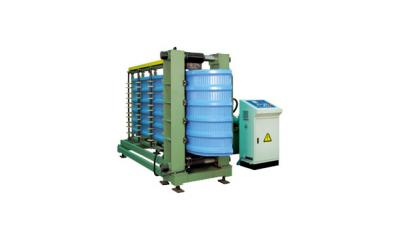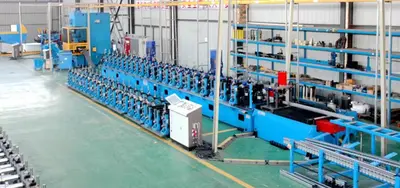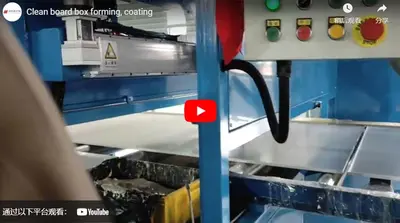A basic principle of the roll forming process is that the strip is bent in a straight line along the longitudinal direction. However, the pressure generated during the bending deformation is combined with the residual stress in the strip, and the strip is often deviated from the cold bending equipment.
To describe the degree of deviation of the strip from the next forming roll, the commonly used words include side bending-horizontal bending, warping-vertical bending, twisting-spiral. In order to solve this problem, a straightening mechanism should be used at the end of the roll forming machine.
The basic principle of the straightening mechanism is to deform the profile with defects such as side bending and warping through the correcting mechanism with sufficient pressure in the opposite direction. If the amount of deformation in the opposite direction is appropriate, the profile can be completely straightened after rebounding. If the profile is twisted in a certain direction, the straightening mechanism rotates the profile in the opposite direction thus producing plastic deformation. If the angle of rotation is appropriate, the profile will no longer be twisted after rebounding.
The straightening of bending or twisting is usually carried out between the last forming roll and the cutting die. If the last roll cannot effectively support the profile, then when entering one side of the straightening mechanism, the entire profile section must be supported. Straightening an asymmetric profile is to perform bending and torsion straightening in the opposite direction of the profile deformation while straightening and possibly torsional deformation.
During the straightening process, the profile will move up and down, left and right, which requires a relatively loose gap between the straightening mechanism and the profile. There can be a certain gap between the straightening mechanism and the surface of the profile. The straightening mechanism commonly used is the Turkish correction head.


 CN
CN
 EN
EN
 fr
fr  de
de  es
es  it
it  ru
ru  pt
pt  ar
ar  th
th  pl
pl  ro
ro 







 Call us on:
Call us on:  Email Us:
Email Us:  #1809, Jianhu Rd, Keqiao, Shaoxing, Zhejiang, China
#1809, Jianhu Rd, Keqiao, Shaoxing, Zhejiang, China 